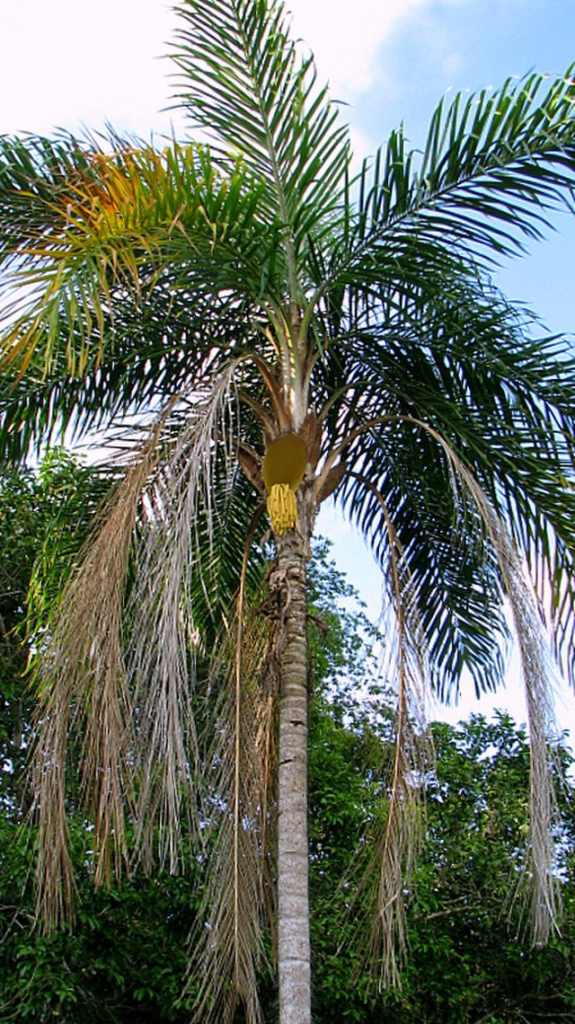
The Peach Palm (Bactris gasipaes) is known for its edible fruits and multipurpose landscaping use. It’s a versatile tropical palm native to Central and South America. Thriving in USDA zones 10-11, it’s a popular choice for both ornamental and agricultural purposes.
Get Peach Palm seeds delivered to your door:
Common Names: Peach Palm, Pixbae, Pupunha,
Scientific Name: Bactris gasipaes
Native Habitat: Native to tropical regions of the Americas, commonly found in rainforests.
Unique Traits: Distinguished by its multiple slim trunks and long, spiny fronds. This palm is known for its peach-like fruits that are edible when cooked.
Fruit: Produces clusters of delicious orange/red fruits. Fruits must be cooked prior to eating. The taste of peach palm fruit is similar to a sweet potato and corn.
Growth and Physical Characteristics
Growth Rate: Moderate, with significant growth during the rainy season.
Maximum Height: Typically grows up to 65 feet.
Foliage Spread: Spiny fronds can extend several feet, requiring ample space.
Climate Preferences and Hardiness Zone
Temperature Range: Prefers tropical climates, sensitive to frost. Temperatures below 30 degrees F may kill this palm.
USDA Hardiness Zones: Best suited for zones 10-12.
Soil Type
Soil Requirements: This palm thrives in most well-draining soil types. Prefers rich, well-draining soil.
Potting Mix Recommendation: Fast-draining palm/citrus potting mix.
Fertilizer: Use a complete palm fertilizer every 2-3 months during growing seasons.
Other Requirements
Light Requirements: Full sun to partial shade.
Placement Tips: Ideal for open spaces or as part of a forest.
Watering Schedule: Regular watering, more frequent during dry periods.
Temperature and Humidity: Prefers high humidity and warm temperatures.
Pest and Disease Prevention
Common Pests: Susceptible to pests like spider mites and mealybugs in dry conditions.
Treatment: If your palm is suffering from pests consider applying a spray on pesticidal horticulture oil.
Diseases: Peach Palm trunks can be infected with water molds while foliage can be attacked by different varieties of fungi.
Propagating Peach Palms
From Seeds
Plant fresh seeds in a fertile, moist potting mix and maintain warmth and humidity for germination.
Offshoots
Mature trees produce offshoots or “pups” that can be separated and replanted.
Peach Palm FAQs
1. Are Peach Palms fast-growing?
Peach Palms have a moderate growth rate, with more growth during rainy seasons.
2. Can Peach Palms be grown in pots?
Due to their size and growth Peach Palms are better suited to outdoor ground planting.
3. Are Peach Palm fruits edible?
Yes, the fruits are a popular food source in many regions of Central and South America. Fruit must be cooked before eating.
4. Do Peach Palm trunks have spines?
Some varieties of Peach Palms will grow large spines on its trunk to protect itself from wildlife. Be cautious around these thorn-like features.
Conclusion
The Peach Palm is an attractive addition to any tropical or subtropical landscape that also offers some agricultural value. This palm offers both tropical aesthetics and edible fruits. Proper care of your Peach Palm will result in a healthy, productive palm for your garden.
